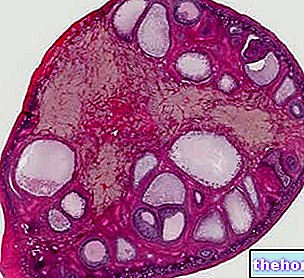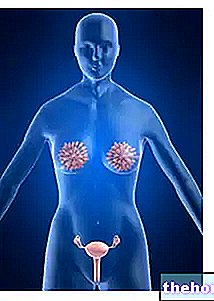Generality
Breast lumps are lesions of the breast tissue, the onset of which can depend on various causes. Their presence can be perceived accidentally by the patient during self-examination, or be detected by the clinician during routine examinations (breast examination, breast ultrasound and mammography).

Breast lumps are a signal that should not be underestimated, but which should not cause excessive concern: in 90% of cases they are, in fact, benign nodular formations, such as fibroadenomas and cysts.
To remove doubts and differentiate benign lesions from malignant ones, therefore to exclude the presence of a breast lump of neoplastic origin, it is always recommended to contact a specialist, who will prescribe a series of tests to identify their nature.
The management of breast lumps depends on the causes and their histological characteristics.
Possible causes
The presence of a breast lump recognizes many causes: often, it is fibroadenomas, inflammations of various kinds or non-malignant fibrocystic changes; Although much feared, the chance of a lump turning out to be breast cancer is very low.
Some benign nodular lesions may slightly increase the risk of developing cancer.
- Fibrocystic mastopathy is the most common cause of breast lumps. It is a benign dysplasia (ie an abnormal development), quite common in women, especially between the ages of 30 and 50. On palpation, these nodules are rounded and often present as agglomerates in both breasts or as well-defined, mobile masses with no signs of skin retraction. In fibrocystic mastopathy, the nodular lesions increase in volume and cause pain in the days preceding the arrival of the menstrual flow; the sense of swelling and tension in the breast tends to disappear, then, at the end of menstruation.
- Other fibrocystic modifications that have no neoplastic significance include adenosis (nodules of hard consistency and variable size) and cysts (single or multiple rounded formations with liquid content). Other nodules may be due to ductal ectasia and mild hyperplasia.
- Fibroadenomas are benign solid nodules, typically painless and mobile (these lesions can be moved under the skin with the fingertips), similar to small, sharp-edged, circumscribed and receding balls. Usually, these lesions develop in young women (often adolescents), and their characteristic mobility in the breast helps distinguish them from other breast lumps. A simple fibroadenoma does not appear to increase the risk of breast cancer, while a complex lesion may slightly increase the risk.
- Breast infections (mastitis) cause intense pain, redness and swelling; an abscess resulting from this process can produce an appreciable mass to the touch. Mastitis is a rather rare disorder and is found mainly in the puerperium (ie in the post-partum period) or after a penetrating trauma. Also, infections can appear following breast surgery. If an "infection occurs in other circumstances, however, a" tumor origin must be promptly ruled out.
- Breast abscess is characterized by a painful lump that tends to gradually increase in size. The skin of the affected area is red, warm and with an “orange peel” appearance. Sometimes, fever with chills and general malaise are associated. "Breast abscess is more frequent in the lactation period and represents a complication of mastitis.
- In the post-partum phase, a galactocele may also appear, which is a round, mobile and milk-filled cyst. These cysts usually present up to 6-10 months after stopping lactation and rarely become infected.
- In addition to these etiologies, a breast lump can occur in the context of tumors of various types. Breast cancer manifests as a hard, loosely demarcated lump that adheres to the skin or surrounding tissues. In this context, deviations, retraction or flattening of the breast or nipple profile may also be evident, with or without blood or serous secretion. Other symptoms associated with breast cancer include redness and “orange peel” appearance of the overlying skin, breast tenderness and swollen axillary lymph nodes (lymphadenopathy).
Signs and Symptoms
Breast lumps can be distinguished into benign lesions and malignant tumors. These formations can be found on palpation or self-examination of the breast and, in some cases, are visible to the naked eye.
Breast lumps appear as a kind of circumscribed peanut, of a different consistency than the rest of the breast, fixed or mobile.
Their presence can cause pain and can be accompanied by other signs, such as:
- Leakage of fluid (serum or blood) from the nipple
- Skin alterations (such as erythema and lymphedema with an "orange peel" appearance);
- Sense of tension;
- Changes in the shape or size of the breasts.
The presence of these manifestations could be the consequence of a scratch, inflammation or other, to be investigated once again with the help of the doctor.




























